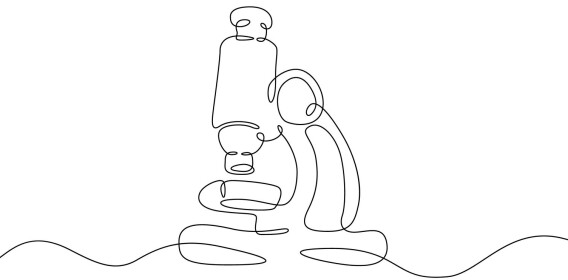Was supposed to have a rejuvenating effect – could end in death
Major plague epidemics made people desperate. This led to rushed and deadly solutions.

When George Washington woke up with a sore throat one December morning in 1799, he asked for one of the trendiest treatments at the time: bloodletting.
Biologist Katrine Lekang recounts this story. She recently published the book Tykkere enn vann – en historie om blodet i kroppen din (Thicker than water – A story about the blood in your body).
More than two litres of blood are said to have been drawn from Washington over the course of a day. On December 14th that same year, he died at the age of 67.
People have always regarded blood and the heart as most important, Lekang says.
Blood has been an especially important source of nutrition.
The brain was less important
“In ancient times, the brain was considered less important. People didn’t really understand its function,” says Lekang.
She points out the mummification process in Egypt as an example. While the brain was carelessly pulled out through the nose, the heart and other organs were treated to last forever.

The belief was that the blood and heart housed our thoughts and soul, Lekang explains.
The ancient Greeks viewed blood as a source of life, she says.
Bloodletting was supposed to help with that. It was quite simple to draw varying amounts of blood from the veins.
Desperate for solutions
“People knew very little about the body and had almost no medicines to work with,” she says.
Major plague epidemics made people desperate, and doctors had to defend their role when people died in droves.
“So they had to come up with something,” says Lekang.
A cholera epidemic ravaged Europe in the mid-19th century. By 1854, it had claimed more than 10,000 lives in London alone.
That led Canadian doctors James Bovell and Edwin Hodder to the deadly idea of injecting milk into a patient's veins.
Milk or cholera
The somewhat surprising result was that the patient survived. The doctors thus concluded, on dubious grounds, that their milk treatment had worked.
However, the next five patients who received the same treatment all died.
In North America, cholera patients continued to receive this treatment for several years. Despite protests from some quarters, milk was, for a time, recognised as a way to stimulate the growth of new blood.
Blood transfusion experiments
Today, we know that blood transfusions save lives.
German biologist Karl Landsteiner solved the mystery of blood types in the early 1900s and later won the Nobel Prize in Medicine for his discovery.
Before that, many died after receiving the wrong blood type during transfusion.
Eventually, blood banks were established. During World War I, wounded soldiers received blood from fellow soldiers with compatible blood types, Lekang writes in her book.

Blood from three young boys
Quick fixes to major problems are still being tested in our modern world.
The American men's magazine GQ has covered a phenomenon in which some wealthy men in Silicon Valley pay thousands of dollars to have young blood injected into their veins. The hope is that youthful blood will slow down or even reverse the body’s ageing process.

The entrepreneurs of Silicon Valley are not the first to try this idea.
Lekang notes that several high-ranking priests are said to have believed in the rejuvenating power of young blood.
Pope Innocent VIII, who lived in the 15th century, was one of them. By the time he turned 60, his health was failing.
As the story goes, three young men agreed to have their blood drawn in the hope that the pope would regain his vitality, writes Lekang. They were each promised a gold coin as payment.
They never got to enjoy their reward, as all three boys died from blood loss.
The pope was given the fresh, young blood to drink. Despite the desperate attempt, Pope Innocent VIII died shortly afterwards.
Still used as treatment
You might think that bloodletting is finally a thing of the past. But Anders Waage, professor emeritus at NTNU, tells us otherwise.
“There are probably around 20,000 bloodletting procedures performed at Norwegian hospitals every year – and that doesn’t include blood donors. Bloodletting is still used quite extensively as an active treatment," he says.
While in the past it was used blindly for all sorts of ailments, today we know of three specific diagnoses for which bloodletting is effective, says Waage.

The most common of these is haemochromatosis. The body has trouble regulating its absorption of iron, and the iron slowly builds up in the body.
The excess iron can damage the organs where it is stored, such as the heart and liver.
“The best way to remove the iron is through bloodletting. The principle behind the treatment is quite elegant,” says Waage.
Chronic anaemia
Most viewed
Half a litre of blood is drawn, which is a standard dose. The drawn blood contains a lot of iron. New blood is drawn every 14 days.
Anaemia occurs when too few red blood cells are circulating in the body.
“You create a constant state of anaemia where the body replaces the lost iron from its own iron stores. The treatment is simple, cheap, and relies on the body's own regulatory systems,” says Waage.
The blood that is drawn is healthy and can be used for transfusion.
Bloodletting is also used for patients with polycythaemia, a condition in which the body produces too many red blood cells.
The third condition is porphyria cutanea tarda. These patients develop fragile skin and blisters in sun-exposed areas. This hereditary condition progresses more easily in patients with high iron levels. Once again, bloodletting is used to reduce iron levels.
Faith and treatment
Bloodletting in medicine goes back thousands of years.
“It’s a fantastic and strange story,” says Waage, adding that we don't need to go far back in time to find a period when medical understanding was extremely primitive.
As late as 1946, medical textbooks still suggested using bloodletting to treat pneumonia, Waage points out.
“A thousand years ago, there was no scientific basis for treatment. It was built on faith and what people thought might work," he says.
No sensible alternatives
The powerful red colour of blood made it easy to associate with something magical. If someone became sick, it might have seemed logical to assume there was something wrong with the patient's blood – and that drawing some of it might help.
Humoural pathology was a medical theory in ancient times which held that human health depended on a balance between four bodily fluids: blood, phlegm, black bile, and yellow bile.
The idea was that drawing blood could help restore balance between these fluids when the body was out of harmony.
“There were no sensible alternatives – and no theoretical understanding of what caused disease, so it wasn’t easy,” says Waage.
These ideas therefore persisted for thousands of years.

Leech therapy on fingers
Sometimes, patients rush to the doctor with their severed finger in a plastic bag. If you are quick enough, the finger can be reattached.
The challenge lies in restoring blood flow. It takes time for the tiny blood vessels to reconnect and for circulation to run smoothly. In the meantime, blood and fluid can build up in the reattached part of the finger.
It might sound like something out of a medieval manual, but leeches are effective against this kind of swelling.
“A leech can suck a maximum of 20 millilitres of blood over time. That's enough for the swelling in the fingertip to go down, and for the finger to survive. The technique is a localised means of bloodletting that can’t be done any other way,” says Waage.
Reference:
Lekang, K. 'Tykkere enn vann: En historie om blodet i kroppen din' (Thicker than water: A story about the blood in your body), Humanist publishers, 2024.
———
Translated by Ingrid P. Nuse
Read the Norwegian version of this article at forskning.no
Related content:

Subscribe to our newsletter
The latest news from Science Norway, sent twice a week and completely free.






































